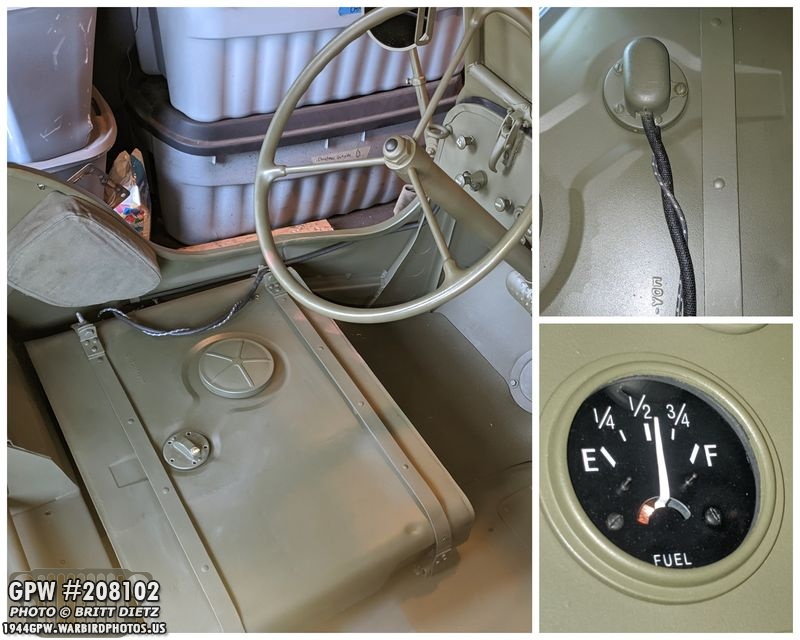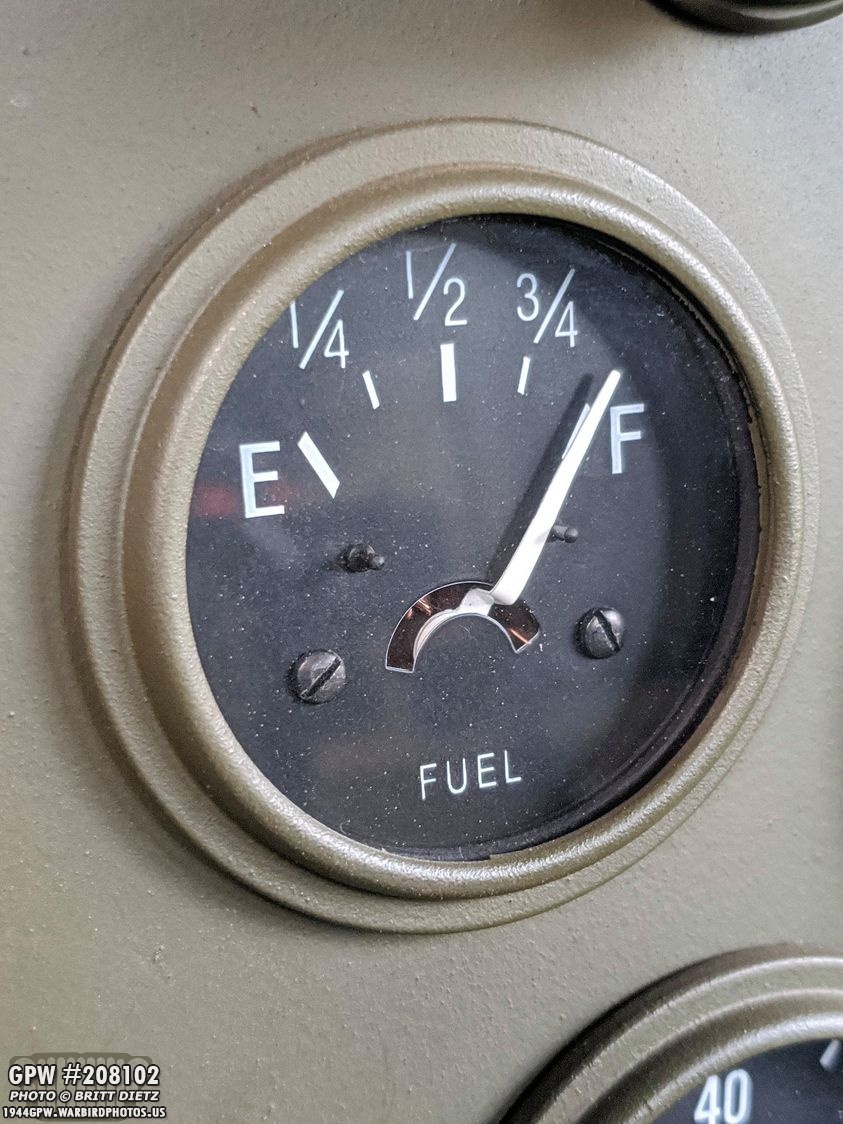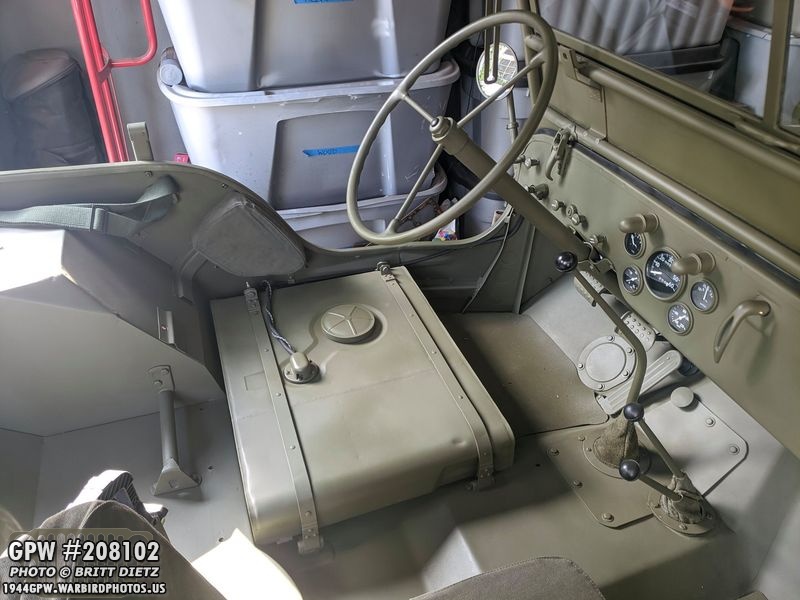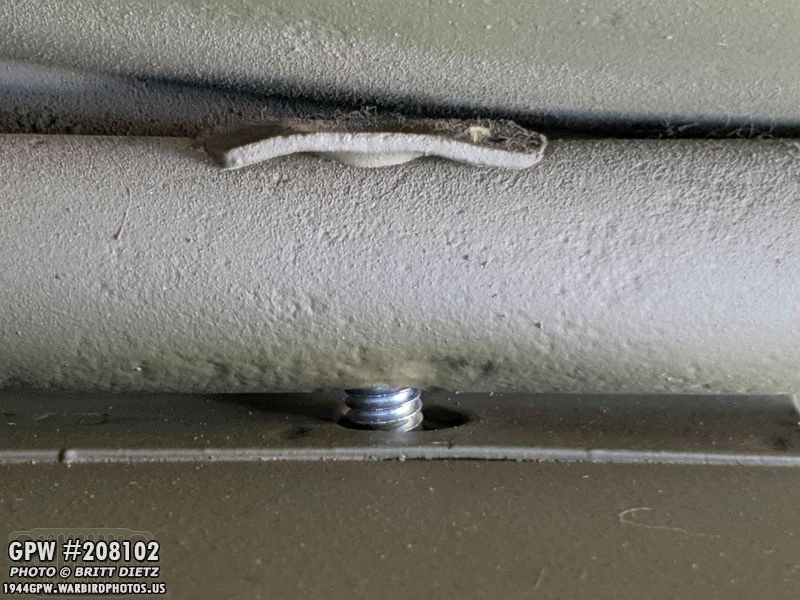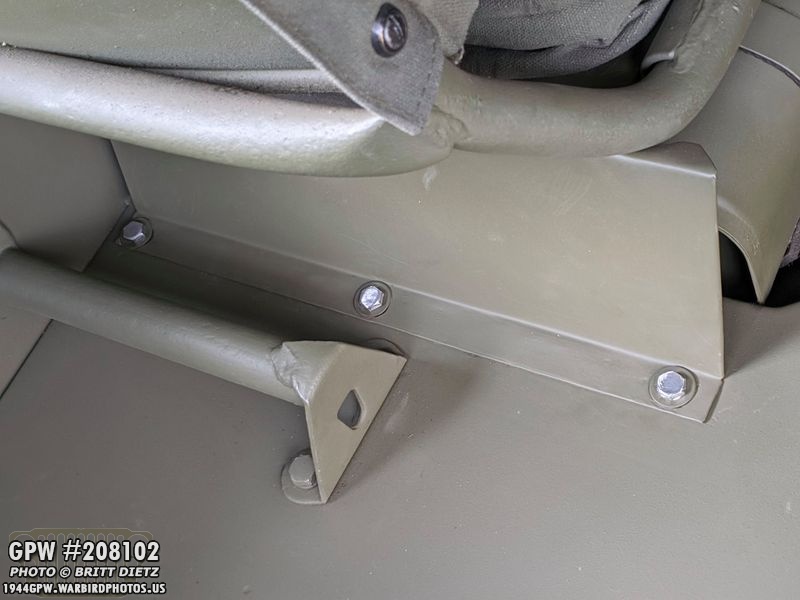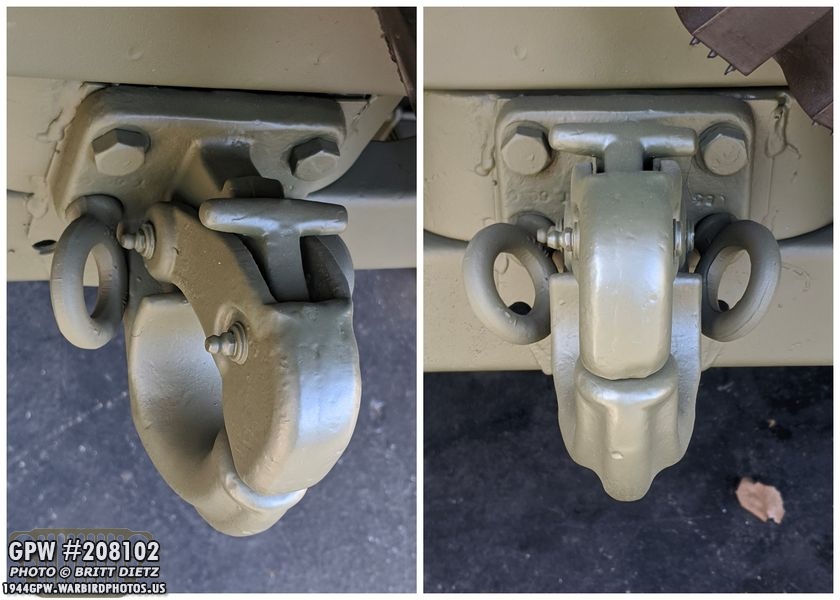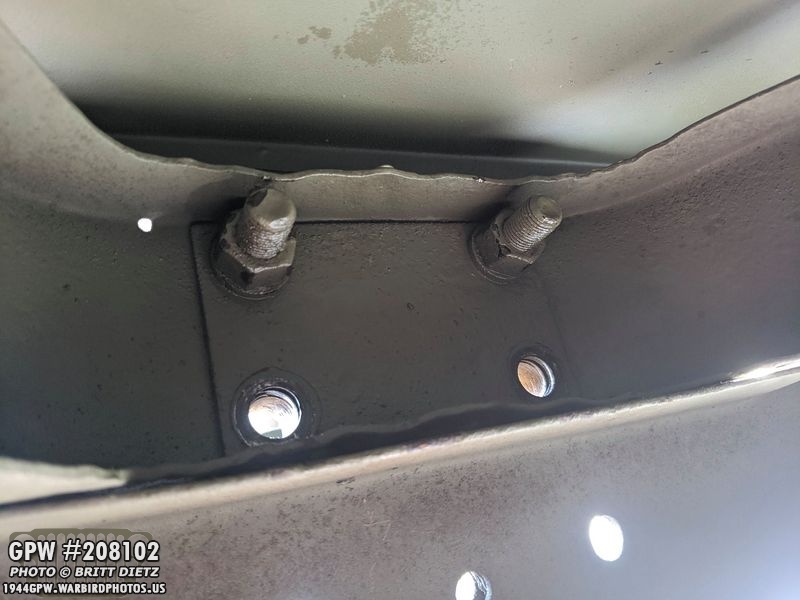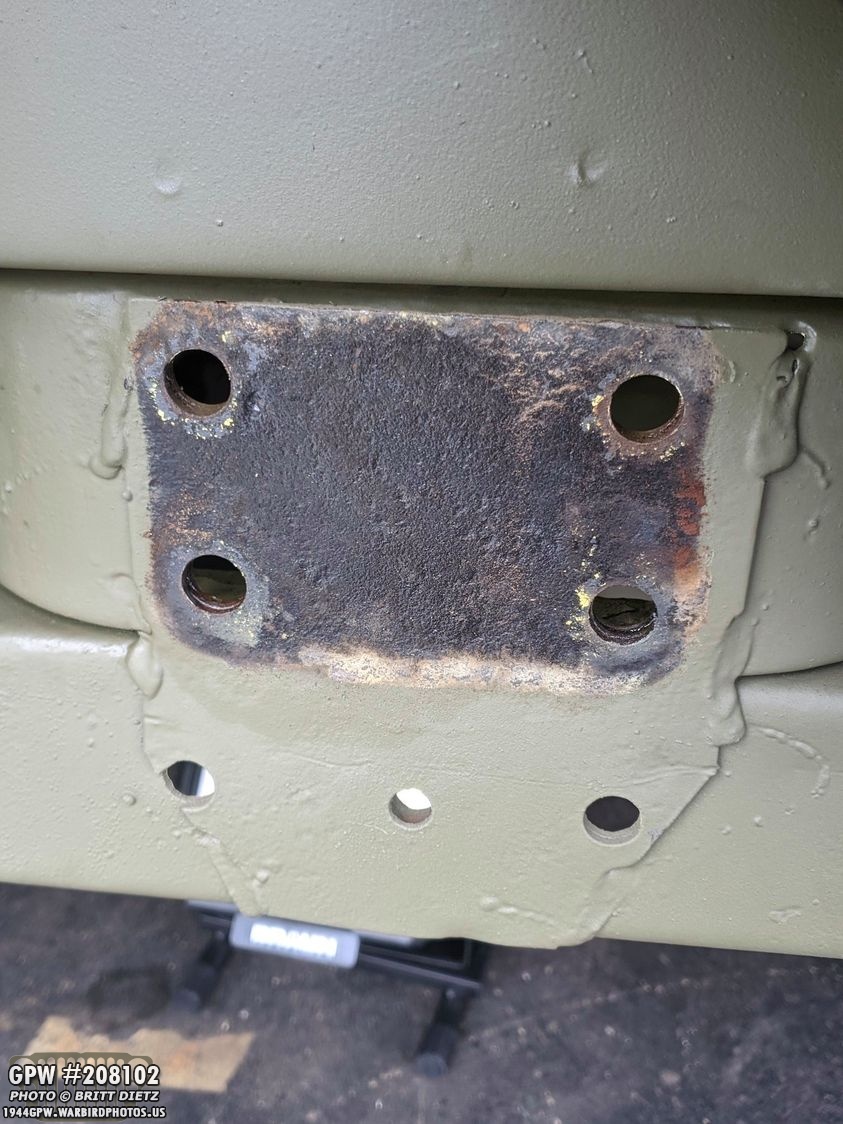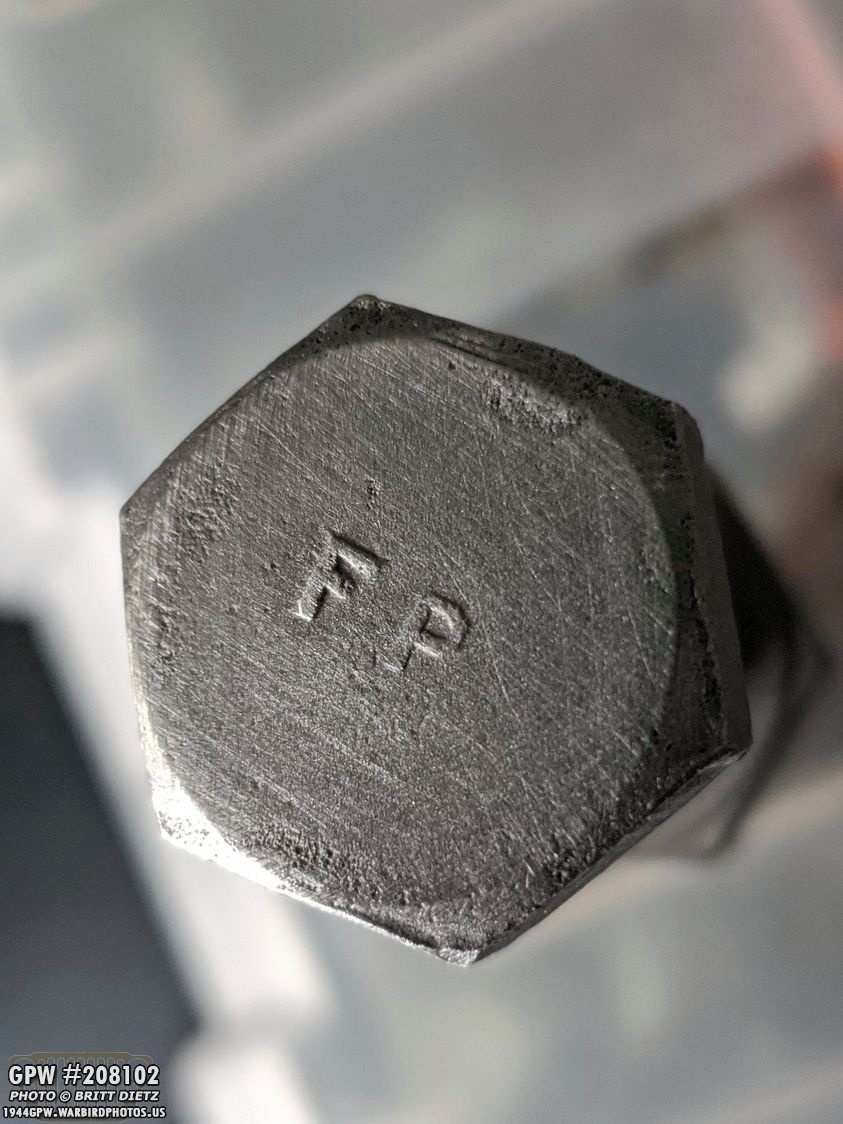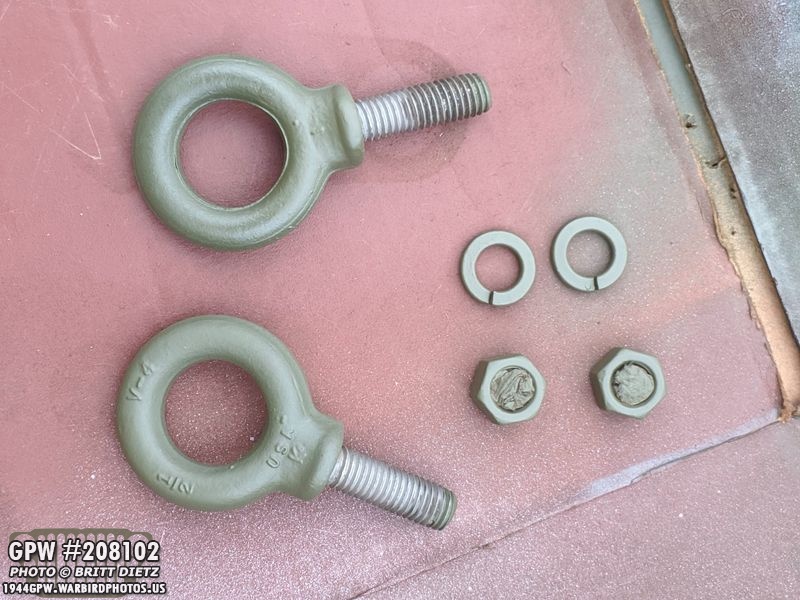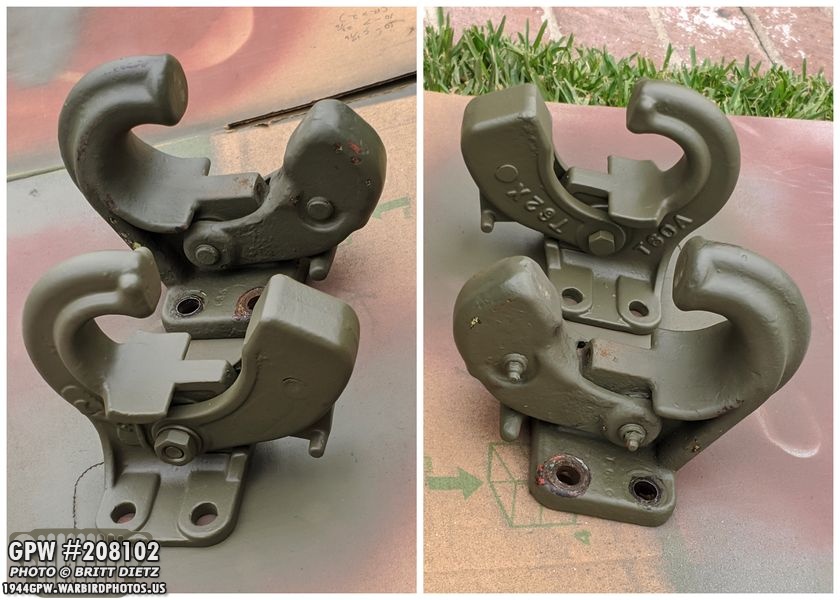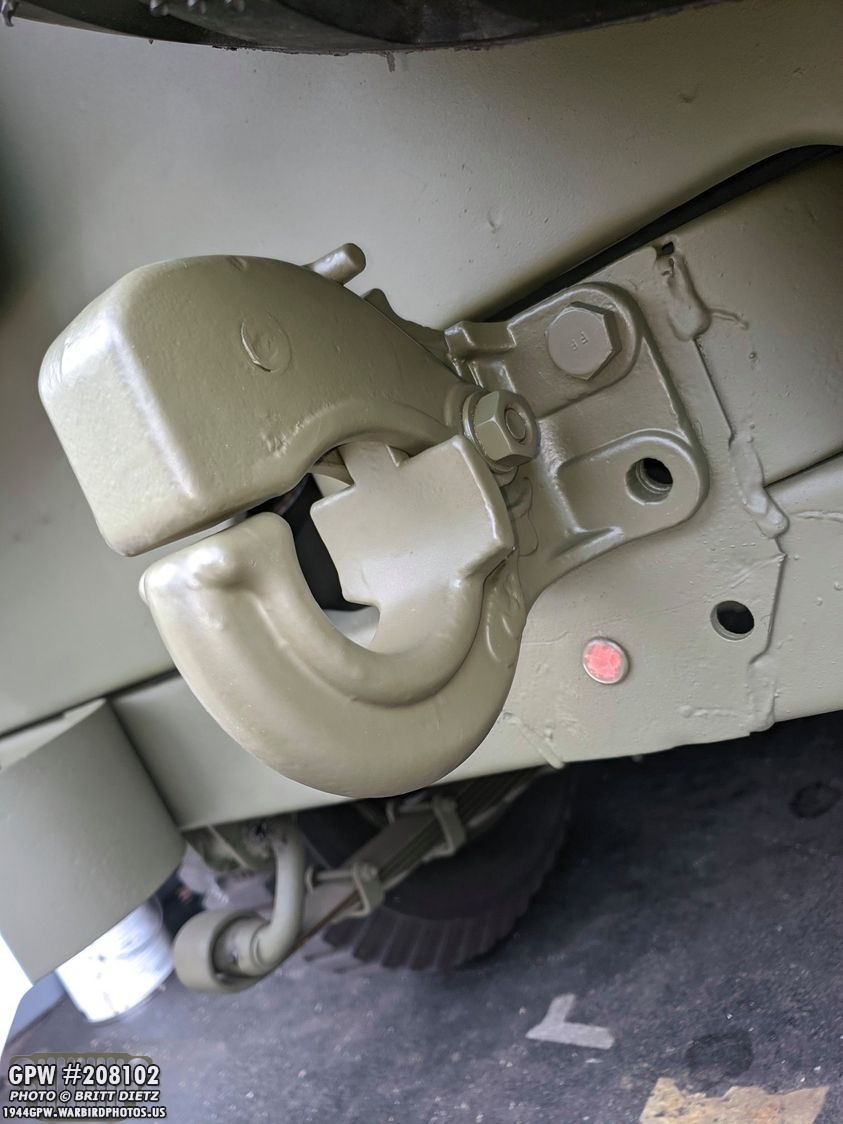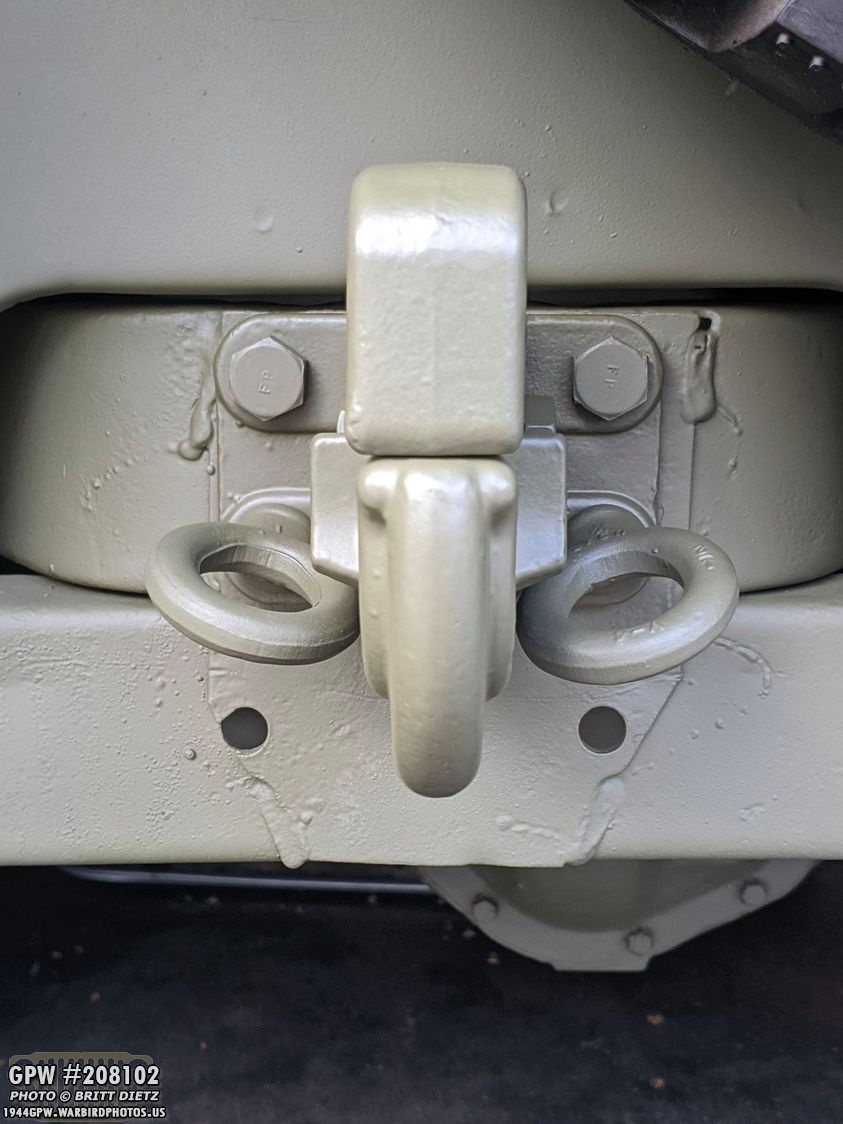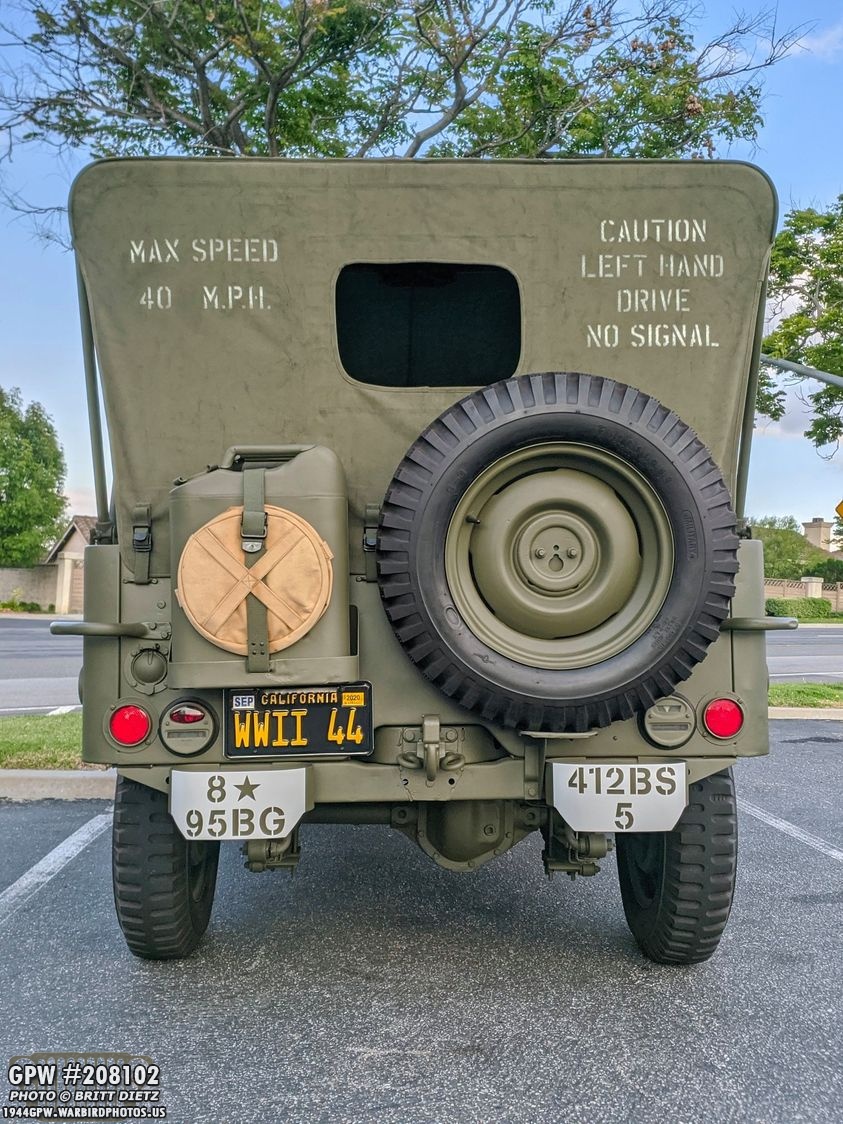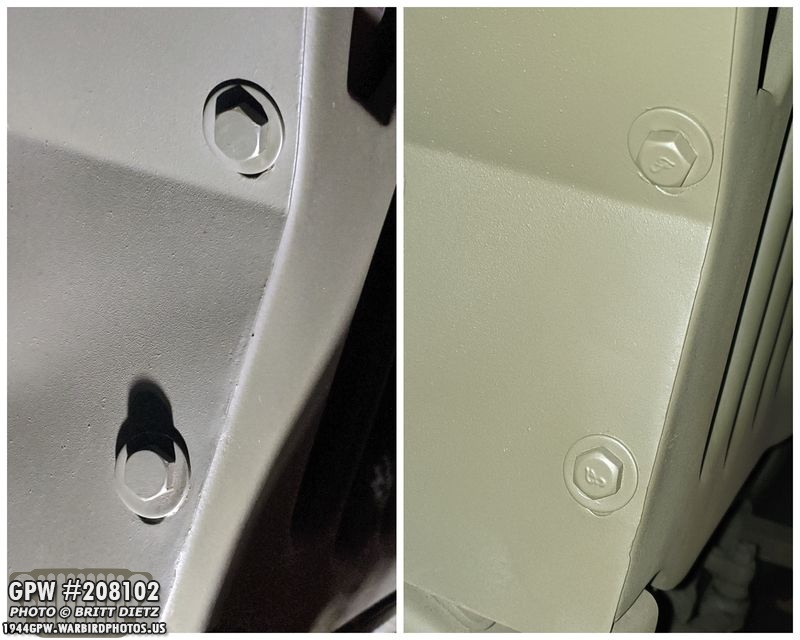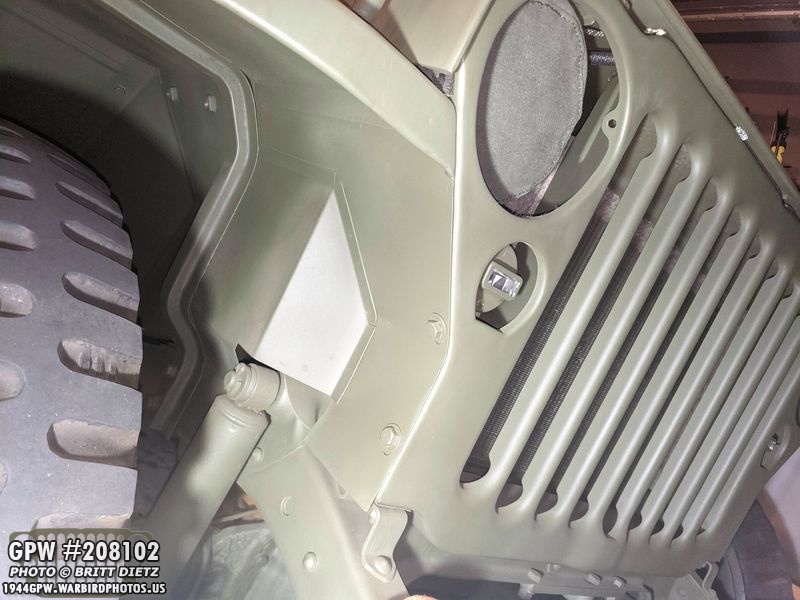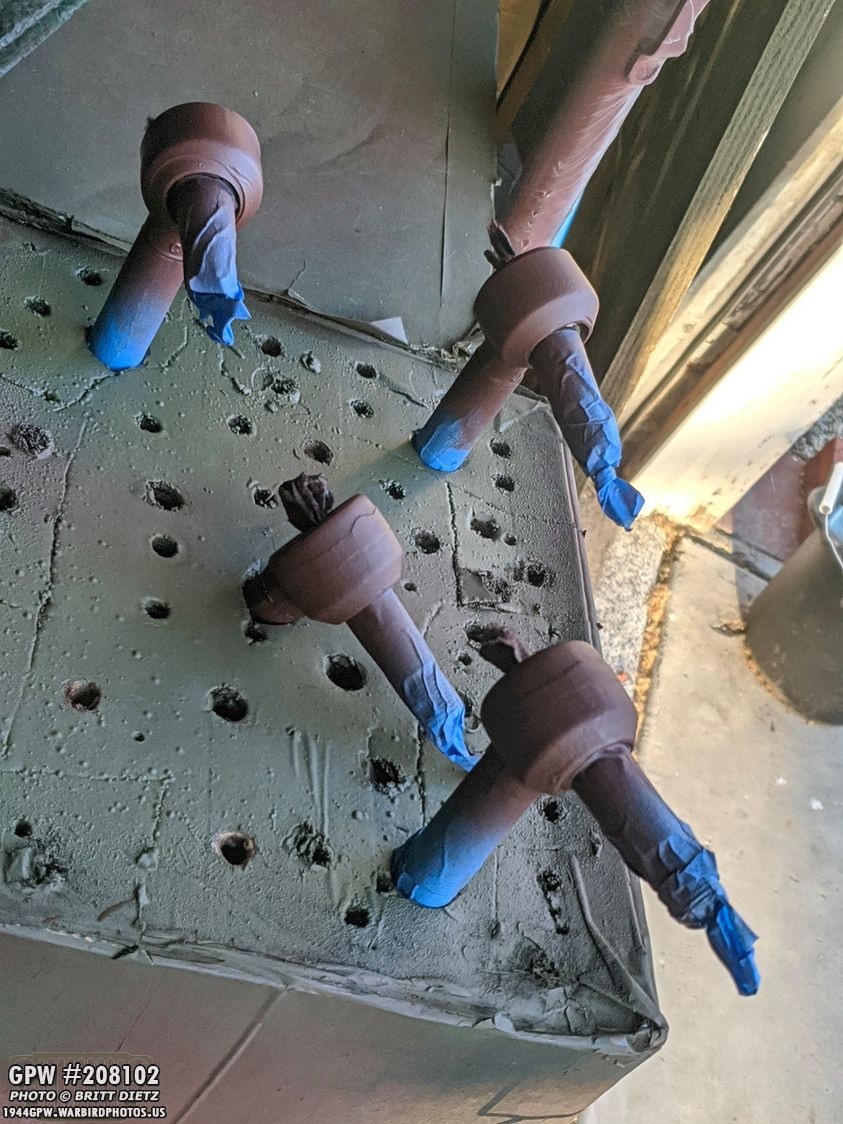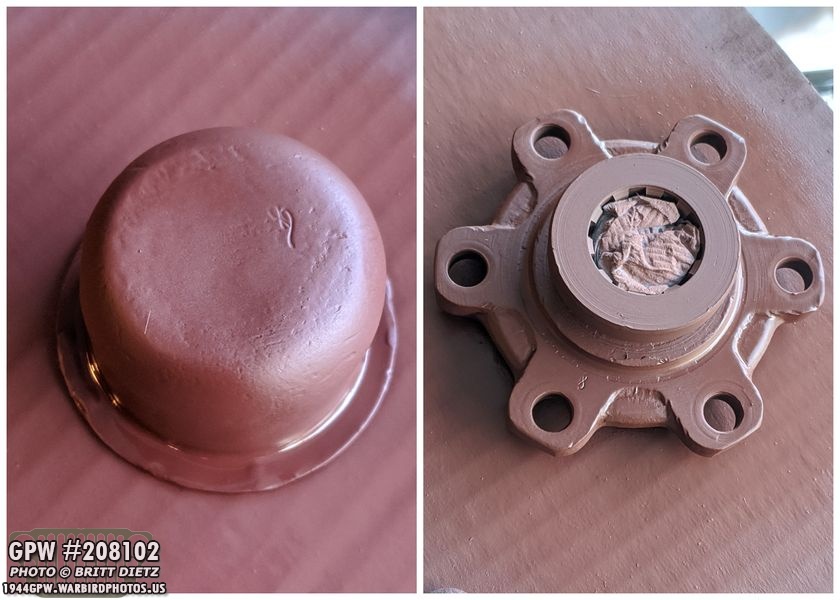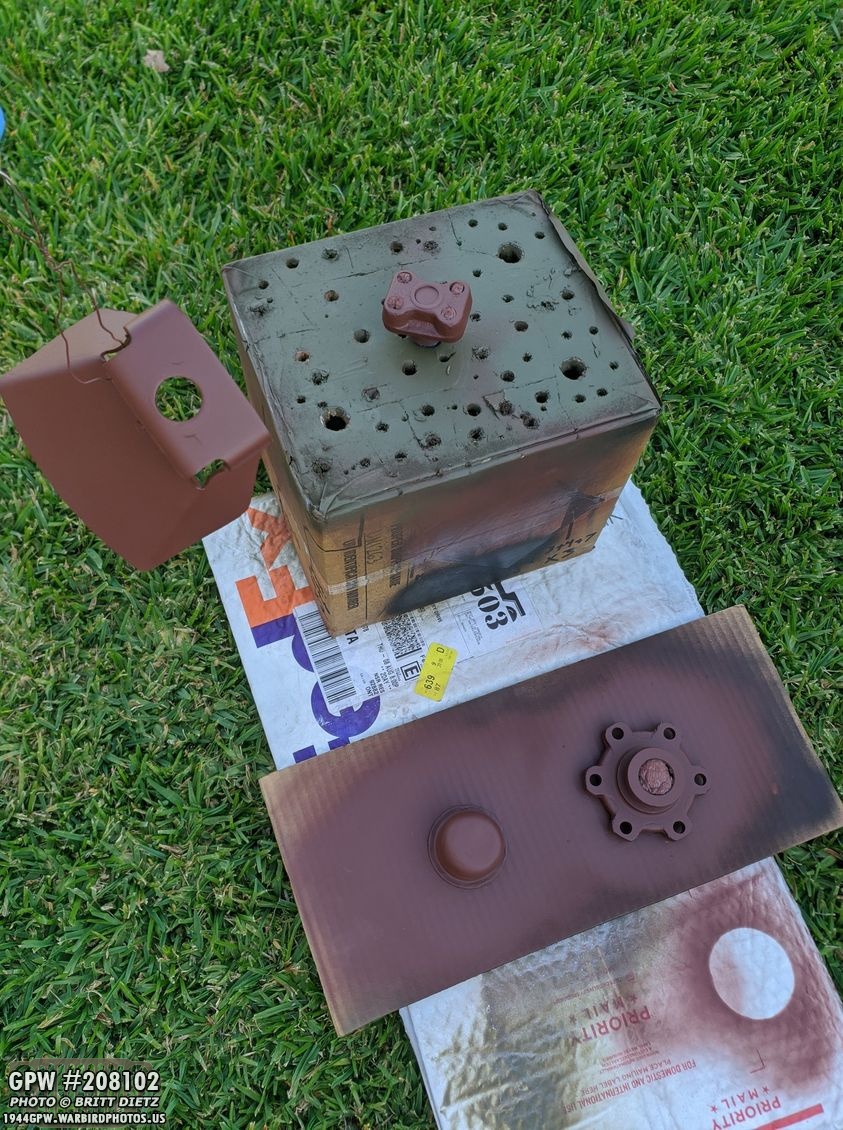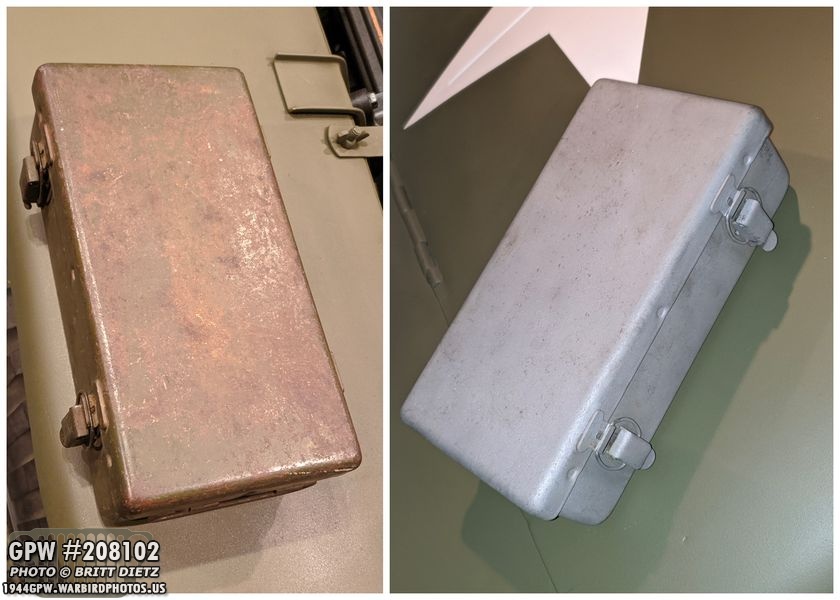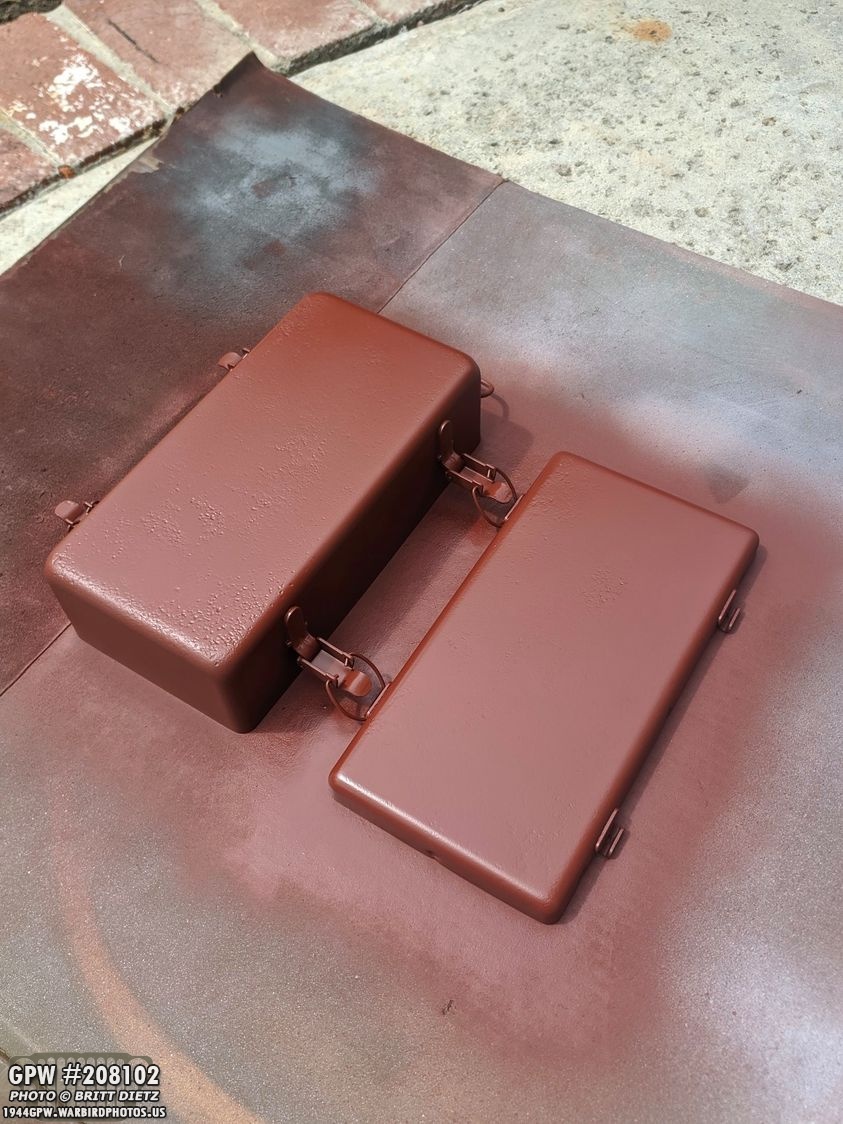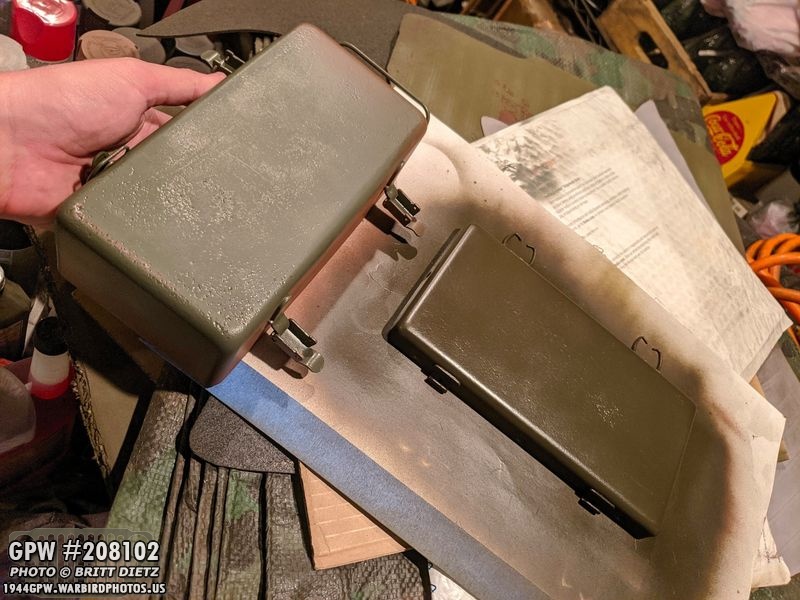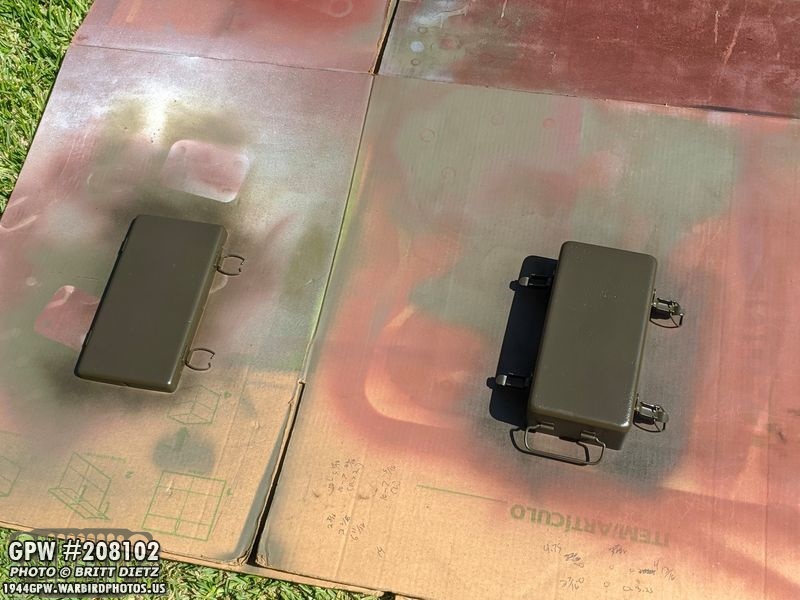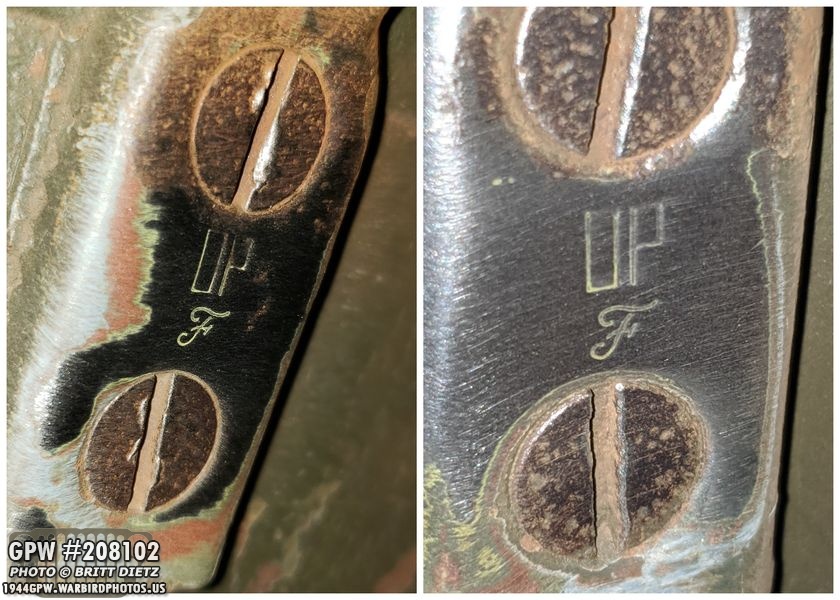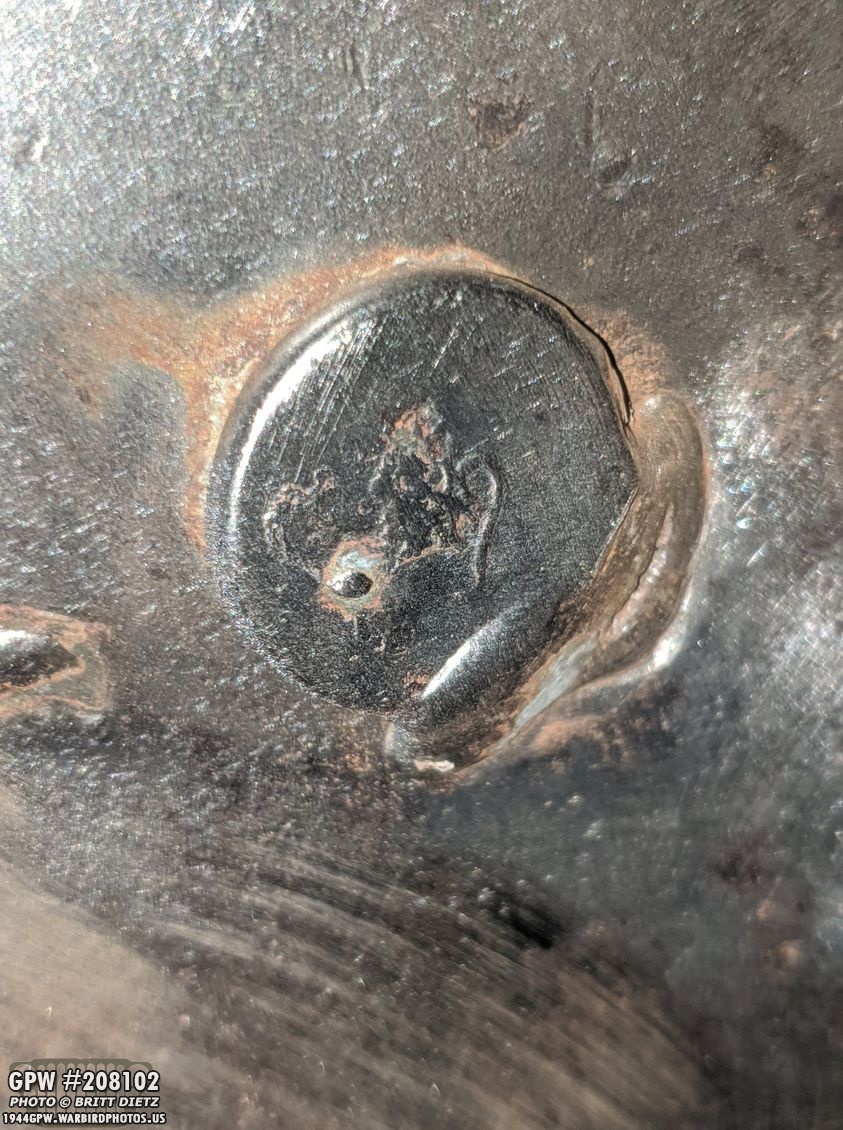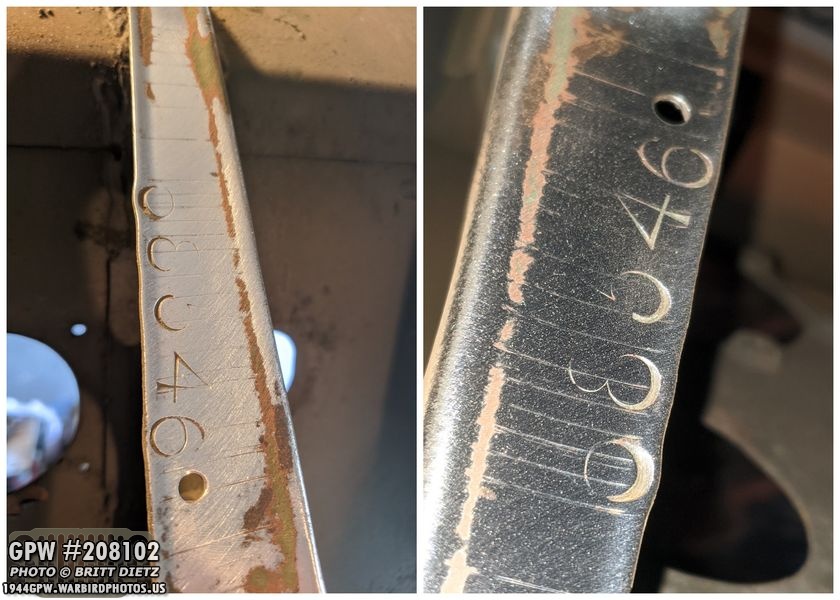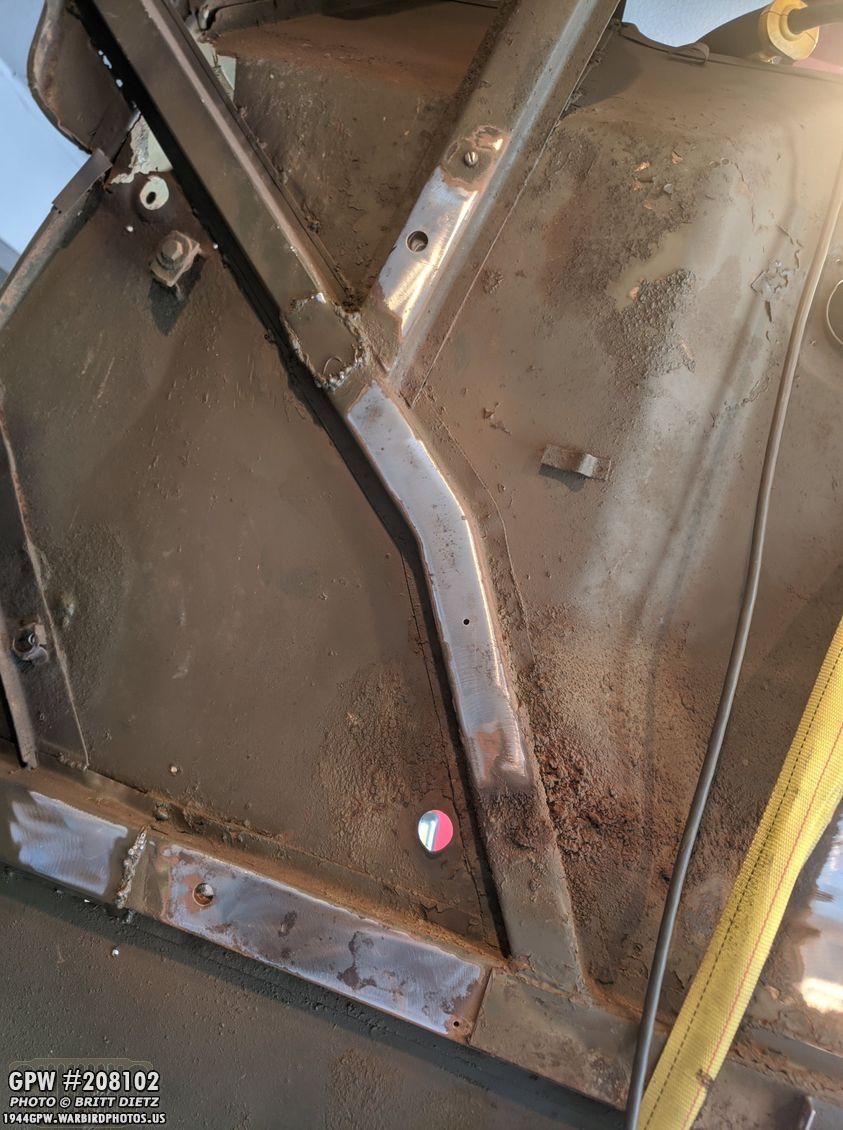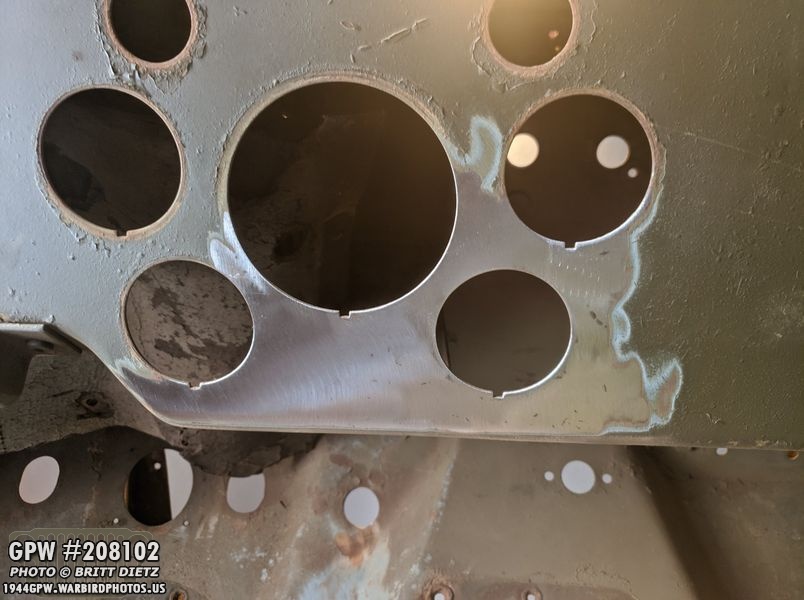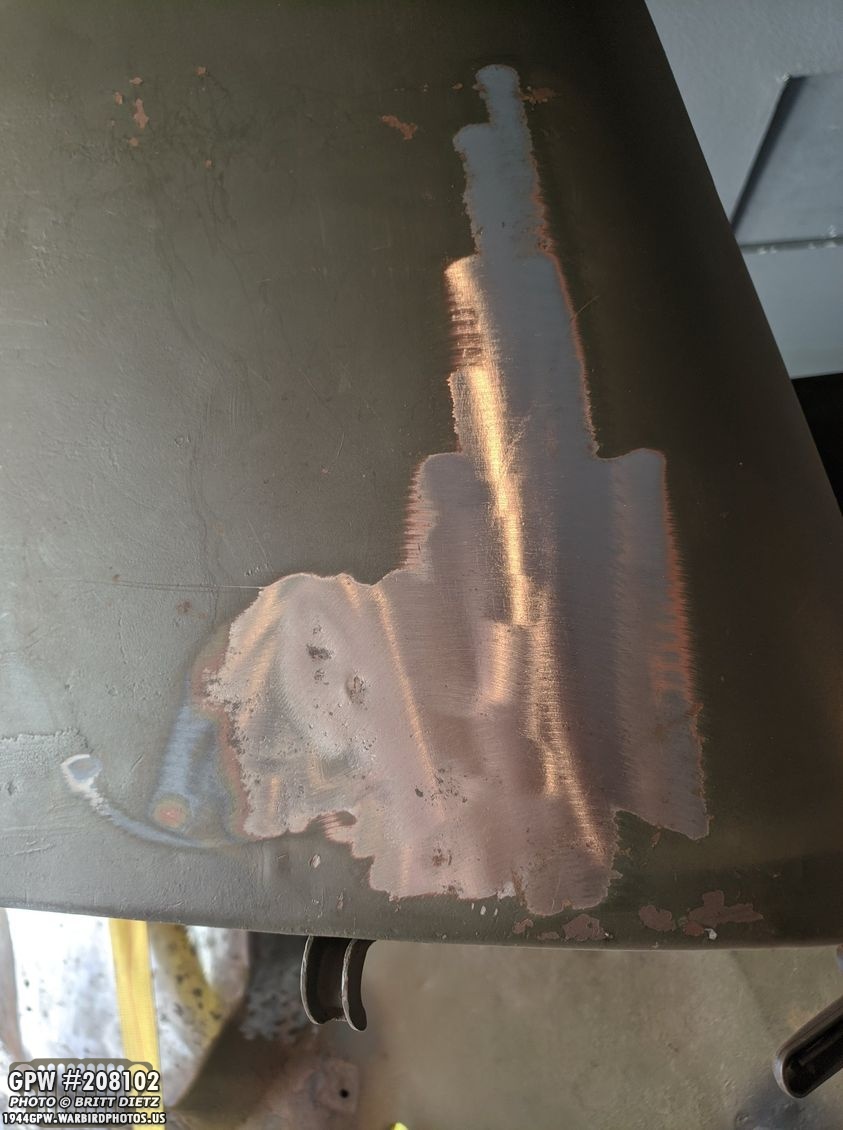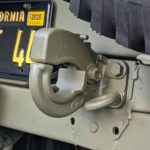 Fuel Sender, F Bolts, Pintle Hook, First Aid Kit, & more!
Fuel Sender, F Bolts, Pintle Hook, First Aid Kit, & more!
Another stay-at-home week worked mostly on the Jeep! This is part 2 of my ongoing quest to fix the fuel sender and get a working gas gauge. I also finally replaced my post-war M38 pintle hook with a correct GPW one. More bolts were replaced to be F stamped, and I worked on restoring my First Aid kit for the Jeep. Finally, I start some work on the original body tub.
A quick look at the Jeep to start off this week’s update! It was great to take to the roads with her again!
Last week’s update I finally got around to a large project I’d been dreading. My gas gauge had been showing empty even though I had a new sender in it. Since the restoration, I’ve just left it that way and checked the fuel level manually. When testing the sender and gauge before installing everything, they worked and I was able to move the arm manually and see it go from E to F. Reason I hadn’t taken the time to investigate is how difficult it is to install the driver’s seat and gas tank shield. But with the current stay-at-home orders in California, I figured what better time? After getting the seat off, I found the sender was still working and the gauge worked. After testing, it was discovered the sender arm had an issue and was sinking.
Ron Fitzpatrick Jeep Parts sent me a replacement to try out. I hooked it up as an initial test, and it seemed to work showing a FULL tank on the gauge. I tested it outside the tank and it had the full E to F motion moving the arm. So it seemed like this one was working. It didn’t seem to submerge when I’d put it in the tank. So, after taking apart the connections, I masked the top and went to painting the sender.
The new sender all painted, wires connected, and the fuel sender protector cap reinstalled. Let’s turn on the ignition and try it again…
Success! Still shows a full tank! Now it’s just a waiting game as I drive the Jeep over the next few weeks to see if the fuel level lowers and, the bigger test, if it raises back up when I add more fuel. But for now, it appears to work!
With that all fixed up, it’s time for the one part I wasn’t looking forward to… reinstalling the driver’s seat.
After dry fitting the seat in position, I used three drifts to keep the holes for the gas tank shield. This will be important as I bolt up the rest of the seat.
Here are the left and right mounting arms of the driver’s seat to the tub floor with the bolt put back on. I have the left arm raised slightly via some grade 8 washers to level the seat a bit more. I removed the paint from the bolts and washer as I knew they’d get scratched up when re-tightening them.
And before getting to the gas tank shield, I also bolted the rear hold-down bolt that holds the driver’s seat frame to the wheel house.
Looking inside the wheelhouse, this is the bolt that holds the driver’s seat.
With the other three bolts installed but not tightened fully (for some wiggle room), I went about getting the bolts in for the gas tank shield. This is always a pain and requires some force, but they eventually went in. It went a bit easier than I thought, mostly because I feel over time the seat/shield has twisted into the manipulated shape from the last installation.
After tightening all bolts, it was time to paint! First up, some red oxide primer from Ron Fitzpatrick Jeep Parts. Love that Red Oxide spray!
And here’s the gas tank shield with the red oxide primer and the 33070 OD Green. The 33070 spray from Ron Fitzpatrick Jeep Parts matches the 33070 gallon form from RAPCO really well and, once dry, is seamless.
Seat finally reinstalled! WHEW!
And here you can see, after drying, the 33070 is a perfect blend. Let’s hope I don’t have to do this again until I fix up my original tub and swap out the repro.
The jeep is back together again and ready for driving! Shortly after this photo, I took her for a spin to make sure the gas gauge was still working. I now have a working horn, working gas gauge, and working e-brake!
Speaking of Ron Fitzpatrick Jeep Parts, got another shipment from them which included more F stamped bolts to replace my plain ones, a GPW pintle hook, and another can of Red Oxide primer! I also got a can of 24087 Korean War era paint (a darker semi-gloss OD Green that’s more of a brownish tint) for the First Aid Kit, which I’ll get to later in this post.
The pintle that’s been on my Jeep (pictured) is actually a post-war M38 Jeep (Korean war era) pintle Hook. Aside from looking larger, the easiest way to tell is that the two safety eye hooks can’t turn horizontal. I’ve been wanting a GPW hook for some time now, but haven’t gotten around to ordering one.
Removing the M38 pintle was a HUGE challenge. The bottom two eye bolts were easy to remove as I had replaced them (before it was two float head bolts like the top) earlier in the restoration when the tub was off the frame. So getting the eye bolts off now was pretty easy. But the top two bolts, they did NOT want to move. Probably 50 years being bolted tight.
Here’s a look at the two safety chain eye bolts after being removed. I decided to touch up their paint a bit.
Looking at the two upper bolts, you can see that there’s not a lot of room to get tools in there. I had to go out and buy a 3/4 deep socket to get them around the nut on this side as the 3/8 bolts are quite long. It was a tight fit as the frame lips are close to the nuts.
It took almost an hour of myself and my girlfriend to get them free and the pintle off. Here are those top two stubborn bolts and the M38 pintle now off.
And a look at the frame area that was behind the pintle. I’ll sand that and repaint it.
And here’s a look at everything it took to get that pintle free… Two manual rachets, one electronic rachet, one torque wrench, a breaker bar, an air impact gun, and lots of PB Blast liquid. Plus it took nearly an hour of slow moving the nuts on the bolt. I was under the jeep with the impact gun and breaker bar while my girlfriend held a wrench on the head of the bolt. I was only able to move the nut 1/4 turn each swing of the breaker bar.
After cleaning up the top bolts, I discovered FP on them. Not an F stamp, but something I’ve not seen before. At the advice of Roger Smith, I kept them on there as they could be special ‘rare’ bolts for all we know with these markings. Doing a search online didn’t result in anything.
Now cleaned up, sandblasted, sanded, and threads cleaned these two bolts are great. The nut freely spins on and off. Amazing how something that is so stubborn can be made anew once again with some cleaning.
The two eye bolts are ready for reinstall. I don’t have GPW marked ones, I went for generics when I got these about a year ago during the initial restoration. At the time I wasn’t thinking about having all GPW stamped things. Now I wish I’d spent a little bit extra to get GPW ones. But alas, I’ll eventually replace them one day.
I haven’t talked much about the GPW pintle I got from Ron Fitzpatrick Jeep Parts, but while I was waiting for the paint to dry on the top bolts I sanded the GPW pintle, fixed a slight issue with the F stamp, and repainted the entire pintle with the 33070. Here I’ve just started to prime the areas that have exposed metal.
Here’s the massive F stamp, after I had just painted it (thus the glossy look).
Before installing the GPW pintle, I put both the M38 and the GPW together for some comparison photos between the two. Obviously, the M38 is the beat-up one since I’d just taken it off.
You can see how much thicker the M38 pintle was, and I suspect that was to beef up the strength of the pintle hook. It’s quite bulkier, thicker, and much heavier. The M38 pintle also has zerk fittings for grease.
Back to the Jeep, I sanded the area on the pintle reinforcing plate that’s welded to the frame where the pintle was. I then hit it with 33070 paint. After trying to figure out what the bottom three holes were, I discovered that the bottom left and right holes should not be there (I’ll eventually fill them), but the small middle hole should have a rivet. It’s common to not have this rivet and it was tough to find shots of it. I saw a few photos of GPWs with a large head disk rivet and realized I had the perfect solution! I used the same furniture screw that I used for the trailer socket shield studs. Tighten it up, paint it, then fill the hex hole with Bondo. Sand it flat and it appears like a rivet!
As the bondo on the rivet was drying, I started to install the new GPW pintle. Here I’ve put the top two bolts back on. You can clearly see the FP marks. They went back on a LOT easier than taking them off.
Then I put the two safety chain eye bolts back on. Technically, from the factory, they would be perfectly horizontal. There’s a lot of debate about how to display these eye bolts, with wartime photos of them in all sorts of different angles. I went with a slight angle as it shows off the large F stamp on the pintle.
And here’s a look at the completed GPW pintle hook now on my GPW! Looks great! Excited to have something more correct. Note, the ‘rivet’ under the pintle that has the bondo still drying.
And here’s the next day after sanding and painting the rivet. I also touched up the paint on the pintle and the bolts anywhere that got scratched on install. Again, I’ll eventually fill those two bottom holes that shouldn’t be there.
And an overall look at the rear of the Jeep! I will say, this GPW pintle does sure look tiny on the Jeep compared to the M38 I’ve gotten used to seeing there.
Next up, time to replace some bolts! I’ve been slowly replacing all the visible bolts on the Jeep (that I originally just got generic no marking bolts) with F stamped ones for a bit more authenticity. I’m not doing the entire Jeep with F bolts, only the visible ones. Here they are getting primer and OD Green paint.
I only paint the heads of the bolts, like these 1/4 bolts for the rear seat brackets.
I changed up the 3 5/16 bolts on each side of the fender to grill. Here’s the lower two on the passenger side before and after.
And here’s the bolt up in the top corner of the fender.
And on the other side, the bottom two bolts replaced.
And finally, the top corner on that side. This bolt is difficult to get in there.
And an overall look at the two lower bolts on the passenger side that have been replaced. They are not super easy to see, but still, if someone looks there, they will see the F bolts.
Moving on, I used the 1/4 bolts to replace the two bolts on the rear seat spring.
And on the other side, the other rear seat spring bracket.
And a little more hidden, the 1/4 bolts that hold the L bracket (that holds the rear seat in the pivot bracket) to the side of the toolbox on the wheelhouse. These are harder to see, but you can see them if you know where to look. I also touched up the paint (not yet in this shot) on every bolt I installed and surrounding area.
Moving on to the wartime GPW axles I’ve been slowly restoring over the last few months, I got to painting some more items this week. Here, the two original and two replacement repro tie rods get some paint. The threads have been masked. Remember, I’m only priming parts. The OD Green will be added once the axle is put together.
The tie rod dust shields got some primer paint.
One of the two lower kingpin caps getting some primer. Nice large F stamp on it.
And the flange cap (with F stamp) and drive flange getting primer.
And then the next day I did the opposite side lower kingpin cap, drive flange, flange cap, and also the brake line shield.
And here’s a look at the brake line shield, hereare the two F stamps on it. There’s a GPW F stamp on the larger outside area, and there’s a small F on the side.
Next week I’ll work on replacing the bell crank pivot bolt, the bearings in the bell crank, etc. Here’s a look at the replacement kit that arrived from eBay.
Next project, I was given an original first aid kit when I bought the Jeep. It was in okay shape physically, but the paint/markings were missing or scratched off, and there was a lot of surface rust. I decided on attempting to restore the entire kit as best as I could.
After sandblasting, it wasn’t as bad as it originally looked. There’s a bit of pitting on the outside, but the inside is super clean.
I decided to use the same red oxide primer as I do on the Jeep. That’ll help for any rust I missed.
Getting the color for the kit right was a bit of a process of trial and error. The color is NOT the same 33070 as the Jeep. At first, I tried RustOleum camouflage since it’s a bit more of an olive green…
But that ended up being too green and not enough ‘red/brown’ in it. It also was a bit too light. So I tried some clear coat to make it glossy and darker, but that still didn’t look right.
I ended up ordering Korean War jeep 24087 color from Ron Fitzpatrick Jeep Parts and giving that a try… and it looks a LOT closer! On the left is the camo color with glossy, on the right is the lid with the new Korean war color.
Here’s how it looks like in the sun with the new paint. I think we have a winner!
My kit was missing the instruction/content sheet under the lid. So I found a super high resolution shot of the label, which I cleaned up in photoshop and made a perfect sized template. I then needed some sort of carboard looking paper that could fit through my laser printer… enter a Trader Joe’s brown paper bag. I cut the bag to a 8×10 size and printed it out. I then sprayed a clear matte coat over it. PERFECT match!
I then used some spray glue and put it under the lid. Looks perfect, even original, to me! So next step is to figure out how to get the FIRST AID, STOCK number, medical symbol, and FOR EMERGENCY USE ONLY on the cover. Then I should have a nice restored first aid kit!
Moving on, so if you’ve been following along, you know that I currently have a repro tub on my GPW. It’s an MD Juan that I carefully customized to match my original tub. Why? Because my original tub needs a LOT of work, replacing panels and a lot of welding. My welding skills are pretty much non-existant, so I want to learn how to weld, practice, and repair the tub properly over however long it takes… then when the original tub is ready, I’ll swap the repro with the original. Here’s a look at the Jeep and the original body tub (on rolling dollys)
I decided to go hunting for some F stamps on my original tub the other day. The two I immediately found (pleasant surprise) were the two windshield catches on the dash. They might as well be welded on as those screws are NOT moving. So I left them on the original tub and bought new ones for the new tub. Both have original F stamps.
I had read that you can find a GPW F stamp on the transmission hump on some GPW tubs. After searching all over (and on the backside to see if I see any stamp marks there) I found nothing. Though I was surprised at how well some of the metal was. Turns out, my ACM II composite body wouldn’t have the GPW stamp on the tub, earlier ones had it. Doh!
Another GPW F is on the back wall of the glove box on the top left area between the two capture nuts. No markings here, also because it’s a later ACMII tub.
I did find a F stamp (that has some welding splatter, so it’s partially covered) on the large head bolt that goes through the transmission hump. The stud part of the bolt, which goes through to the bottom of the tub, is where the transmission to body tub bond strap connects.
I went back and revisited my tub serial number on the driver’s side toe board. It’s not a very good stamp (common for ACMII tubs), and I always thought it was 68546, but when posting it to a GPW group on Facebook, some people said they believe it’s 88456, which would be correct for a June 1944 production.
I then went about using the wirewheel to test various areas of the tub to see how bad the rust is. I was surprised that, aside from the large areas of cancerous rust and rusted through panels, overall the metal is in good shape. Here are some random spots on the bottom of the tub I tested.
The hat channels look pretty good. There’s some patches that were added when the Jeep was restored before me, I’ll fix those and make them seamless.
The driver’s seat rest was in good shape, even if the wheelhouse is falling apart. You can see some of the cancerous rust on the body floor on the top right.
The dash cleans up really well. I’ll wetsand some of the larger areas on the dash to see if there are any markings. You can see the same layers of paint (Modern green, 2x Navy, Navy OD Green, Factory Green, then red oxide primer) as the hood.
It looks like the cowl had the paint removed when being restored as it doesn’t have all the layers of paint.
The passenger wheelhouse is in rough shape, lots of rust. I’ll have to sandblast this area to see how bad the rust is.
And here’s a look at the driver’s side, where an incorrect panel was added. This corner is usually in bad shape, and it looks like a panel was added that didn’t have the pioneer tool slots. I have a correct replacement panel for this location along with a whole new step area for the driver’s side. It’ll be a lot of work when I get to that. I’m also going to wet sand the sides of the tub to see if there are any USN markings. Many times markings were added around the forward handles.
And that’s it for this week! Quite a bit of work done throughout the week as I keep busy during the stay-at-home orders! I’m getting so much done on the Jeep being home every day. While the current situation for the world is terrible, I am taking advantage of being home and getting more done in this past month than I’d be able to do otherwise in a few months! Till next week, stay safe out there!

